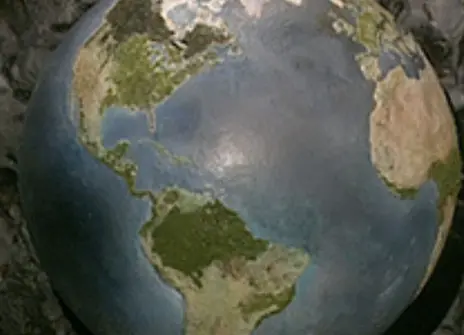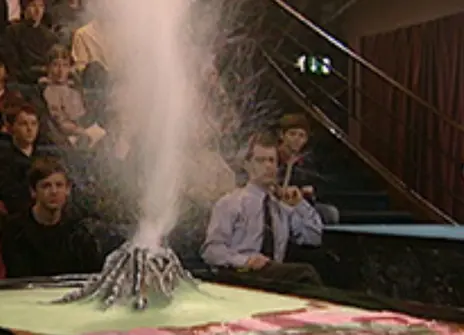Lecture 1 – On the edge of the world
From the 1995 lecture programme:
It is a daunting task: the centre of the Earth is more than 6,000 km away and we can't dig a hole that deep! We have to look for clues: and they may be unexpected ones. What can we learn from a large earthquake in Bolivia that was felt in Canada, and made the Earth wobble for months? What can we see in volcanoes, which bring material from deep underground to the surface?
The early navigators knew that the Earth's magnetic field changed with time, but how does that help us to know that the Earth has a core made of liquid iron? What clues are provided by our neighbours in the solar system? We have visited or flown past some of them, and some of them visit us in the form of meteorites. Such clues tell us what the Earth is made of, that it is layered, and that it is very old – it formed about 4,500 million years ago.
But that is not all. As we go deeper into the Earth it gets hotter and this encourages all crystalline materials, including rocks, to flow. The flow happens in the solid state and is called creep: the rocks do not have to melt to do this. The same rocks which deep down are hot and weak can be very strong at the surface, where they are colder. So the Earth has a strong outer lid above a weak, creepy inside. This dual behaviour is the key to how the Earth can be so mobile.
About the 1995 CHRISTMAS LECTURES
From the 1995 lecture programme:
We need to understand how our planet works. Catastrophes such as volcanic eruptions, earthquakes, climate change and sea level rise are starting to have a huge impact on our lives as our population increases and we colonise every available corner of the world, particularly the coastlines. Yet at the same time these phenomena, which are disasters to us, are a natural part of the way the Earth behaves.
We can use them as tools to see deep inside the Earth, to see how the planet is put together, and how it changes with time. Our understanding of how the Earth works has just undergone its biggest change since we realised that the Earth orbited the Sun. Scientists used to see the Earth as a planet whose surface had been the victim of random and unexplained events, such as mountain building and changing climate. Now we know that what we see at the surface is caused by vigorous motions deep inside the Earth — motions that are slow compared with our lifetimes, but are very fast compared with the life of the Earth itself. Far from living on a dead lump of rock in Space, we are living on jelly, but didn't realise it! These lectures trace the story of how and why our views changed — from a fumbling suspicion that continents had moved around, through a detailed reconstruction of how the pieces fit together, to the present, where we can measure the motions directly and see them going on. It is a story in which chasing a clue to one puzzle has often produced unexpected results and paradoxes.
Extraordinary leaps in understanding have come from the development of new tools — usually measuring instruments designed for purposes quite unconnected with their most famous discoveries. The Earth Sciences have come a long way from the Victorian image of a lonely geologist wandering the mountains with a hammer, so that measurements at the atomic or sub-atomic level can reveal the processes behind events as grand as ice ages. Nor are we restricted to our own planet: as we continue to explore the solar system and beyond we are discovering why the Earth is so special, and what series of accidents or processes have made it so suitable for us to live on. But the story does not yet have an ending: the Earth has a habit of letting us solve one puzzle only to make us realise it is part of an even bigger mystery we don't understand.





